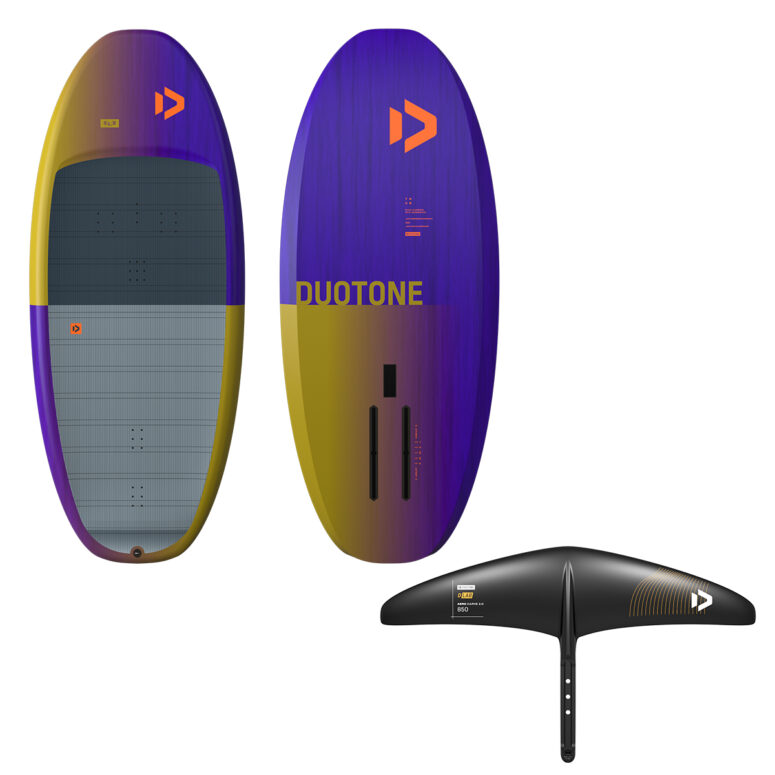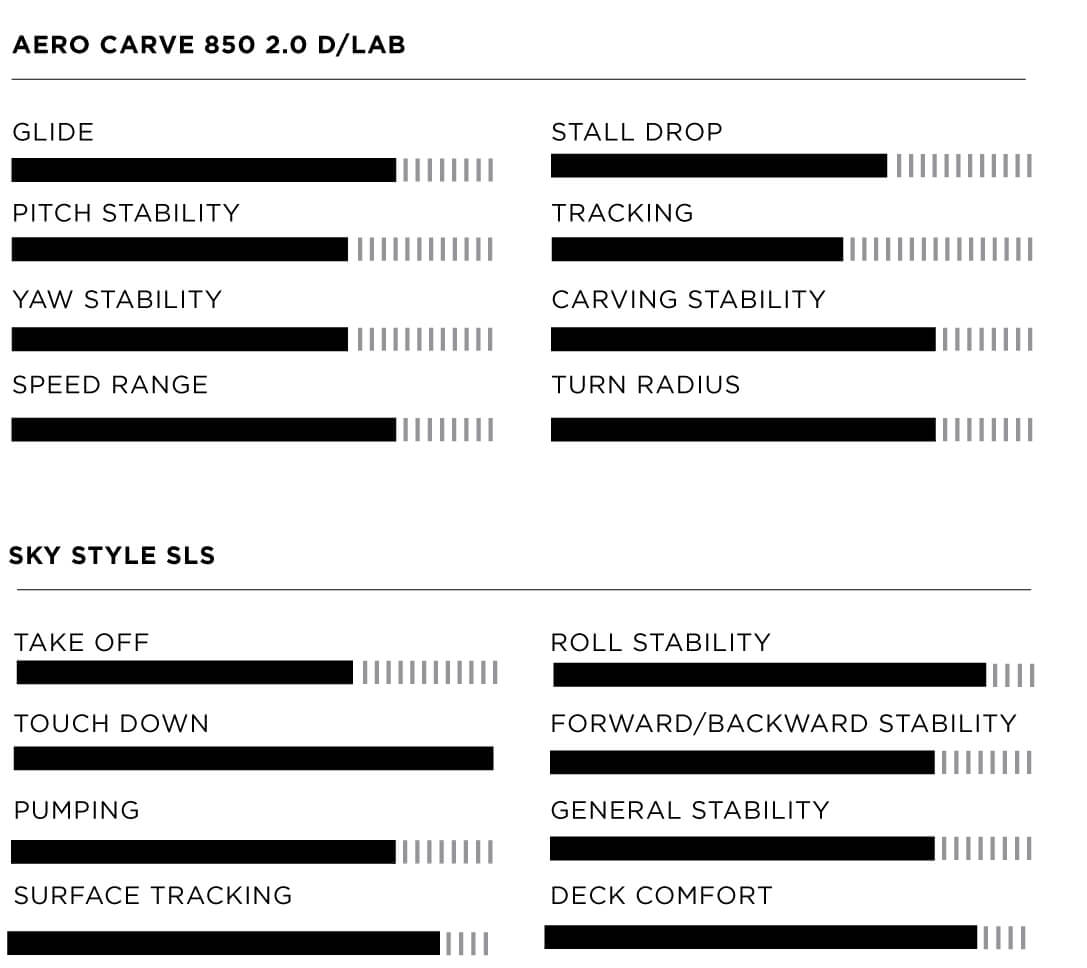

When you purchase gear through links on our site, we may earn a small commission. Here’s why you can trust our tests and our affiliate partner.

The Aero Carve 850 2.0 is an agile foil which seems to sit smack bang in the middle of most performance characteristics, making it extremely versatile regardless of your intended usage. Its unashamed freestyle leanings have characteristics which are tempered by the v2’s improved pump-and-glide characteristics, meaning a better crossover into waves if necessary. Shape-wise the Aero is a swept back batwing affair and quite an evolution over the previous shape with a thinner section and noticeable improvement in top end.
We tested with the SLS Aero 82cm mast, which sports three sturdy M8 bolts to attach the plane set. This is the strongest and stiffest mast from the Duotone system, with a pre-preg carbon mid-section attached to an aluminum base. It’s designed to handle larger span foils with ease, or take an absolute kicking if you’re into freestyle. Our rudimentary wobble tests definitely confirmed the stiffness. A luxurious addition to the foil system we hadn’t seen before was torque settings and bolt specifications written on all the apertures, meaning there’s little room for error or consulting the manual on assembly.
The connection system is intelligently designed with the fuselage-to-tail connection handled by a single titanium M6 bolt, set at 45 degrees to keep the plane set together which overlaps on the mast bolt apertures. The additional clamping force required comes from the three M8 bolts which attach the plane set to the mast; it’s an elegant and incredibly strong system with a cunning absence of drag points. The top mounted P180 stabilizer matched the front wing well, offering a decent level of glide and stability.
Overall we found the Aero Carve a capable allrounder, with a playful nature and eager turning characteristics, maintaining decent pitch stability around faster committed turns, and it didn’t feel too fidgety in disturbed water states, an important characteristic for a wind sports focused foil. It would be an ideal daily driver for positive powered wind conditions. At 90kgs with a 60l board, we’d probably pair it with something around the 1200cm2 mark for lighter, more flaky situations.
The Sky Style SLS is pitched as an allrounder with favorable characteristics for mixed discipline riders in both surf and freestyle. Its plan shape is almost a perfect oval and it retains a lot of volume in a compact length. Available in 45 to 85l in 10-liter increments, there is a size for everyone.
The cross-hatched deck pad is a luxurious feature which provides is a decent amount of grip and comfort level. A proper surf tail kick sits in the rear of the pad which helps locate your feet well, important for a board with a foil box which sits a little further rearward in the board than some. The deck itself has a gentle recess, letting you feel a little closer to the foil, which is important for a board that has so much volume and thickness in a short space. Foot strap inserts are sensibly placed, including a two-strap, lined-up option and combined with the matching Aero Carve foil provided, we found central positions for everything worked straight out of the box immediately in a balanced fashion, negating the requirement for any tuning.
The hull of the board is a clean, flattish profile. There’s an absence of any over complexity here, with a modernistic gentle double concave in the front to smooth out touchdowns and landings. The rail chine is even and consistent over the entire length of the board and glances off the water well on a more planted carve. Construction is sturdy, important for a board with some freestyle intention to take some harsh landings with ease and we’d classify it as a mid-weight board across the market. The foil box is placed quite far back relative to the tail, and a recessed SUP handle makes for easy carrying on the beach.
In practice we felt the Sky Style had perhaps a little more flatwater and freestyle bias in its application, with the short, wide and voluminous shape preferring a little power in the wing to get going; rather than slither out of the water, it seemed to release in one go. Where the board came into its own was for jumping and landing where it provides a super stable platform to land on. The scooped rocker line and high volume in the nose in particular ploughs through a choppy landing with ease. For those with freestyle inclinations it should be a strong contender, where its robust and planted nature will let you get away with landing almost stopped and ride out without issue.
